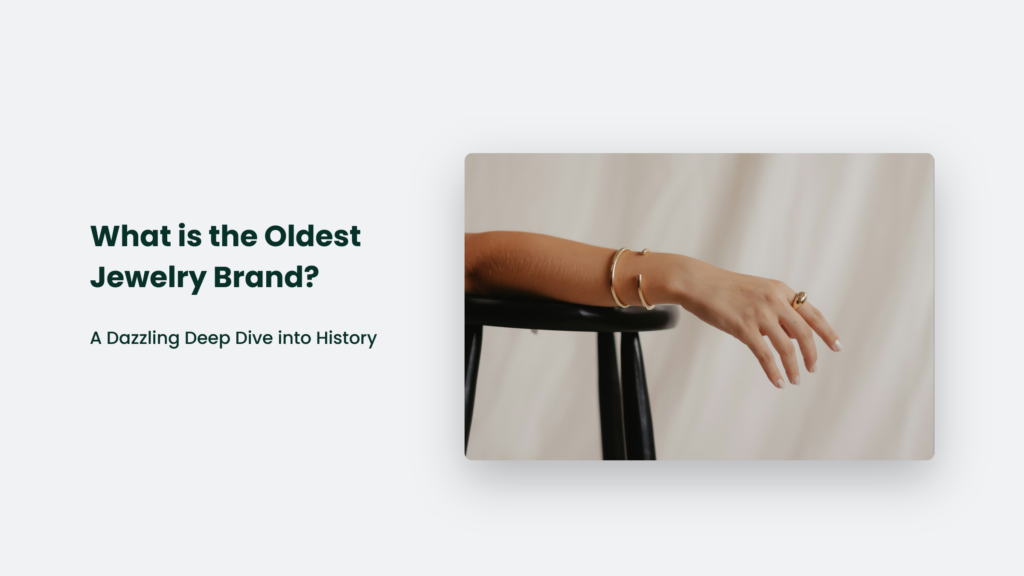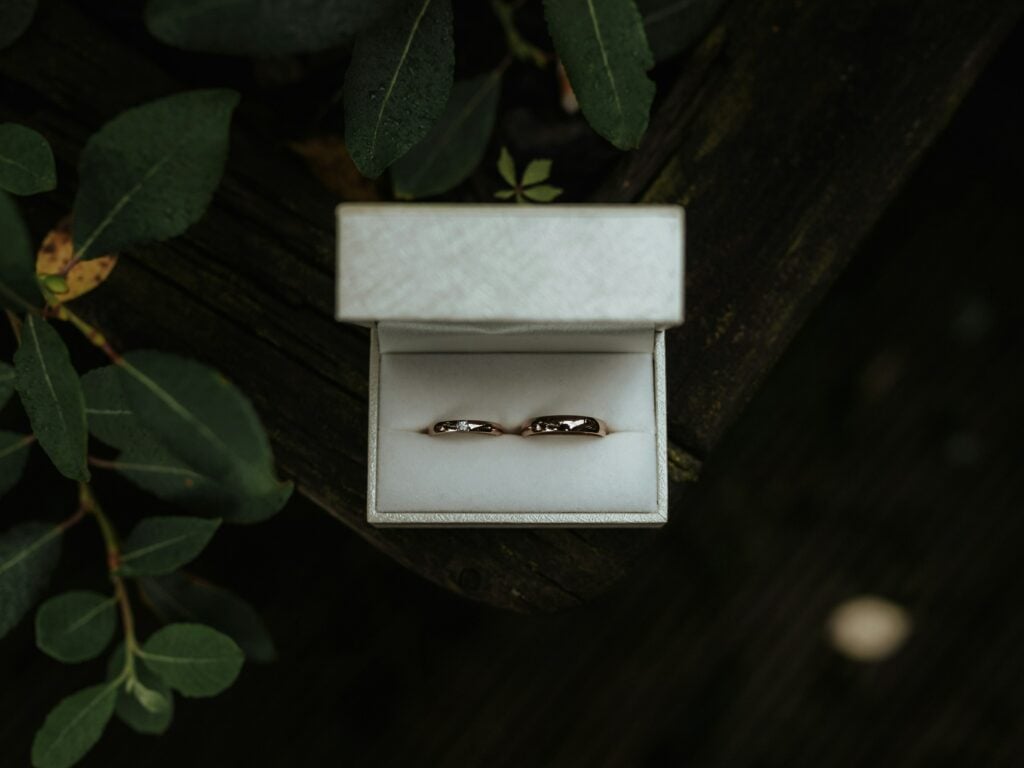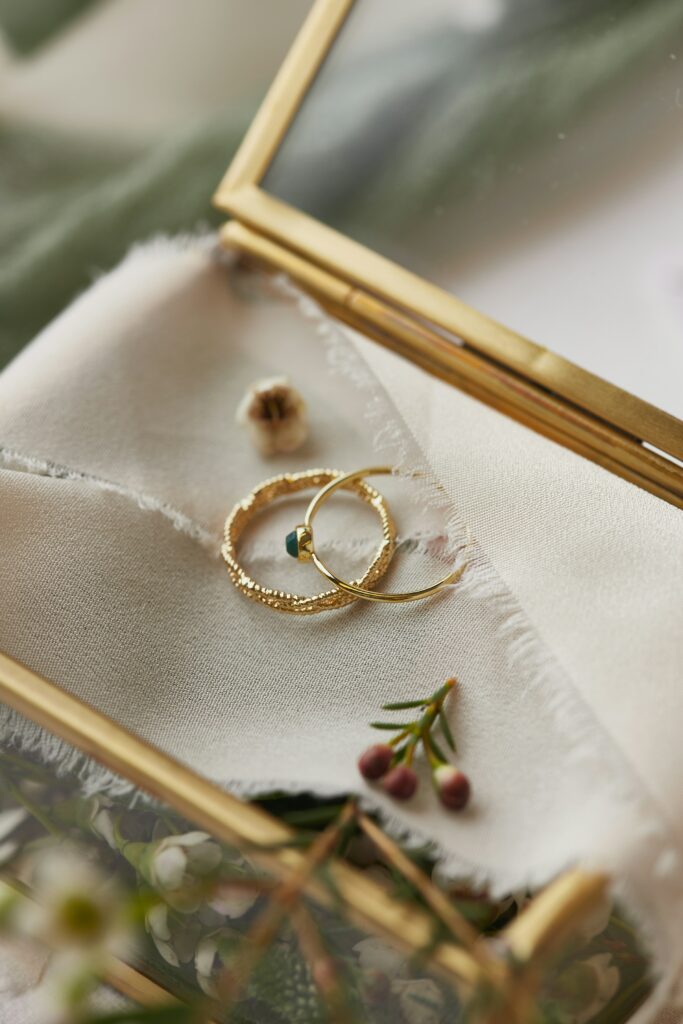Let’s cut to the chase: you’re here because you want to know the oldest jewelry brand. Maybe you’re a history buff, a jewelry enthusiast, or someone who likes dropping obscure facts at dinner parties. Whatever your reason, buckle up because we’re about to take a wild ride through the glittering annals of jewelry history.
Now, you might be thinking, “How old can a jewelry brand really be? Surely not older than my great-grandmother’s engagement ring.” Well, prepare to have your mind blown, because we’re talking about brands that make your family heirlooms look like they were made yesterday and find out what is the oldest jewelry brand in the world.

What is the Oldest Jewelry Brand?
The Contenders: A Royal Rumble of Bling
Let’s look at some of the other historic brands that have been adorning royalty, celebrities, and lucky commoners for centuries.
Mellerio dits Meller: The Dark Horse (Est. 1613)
Next up, we have Mellerio dits Meller. Never heard of them? Don’t worry, you’re not alone. This French jeweler has been flying under the radar for, oh, just a casual 400 years. They’ve been crafting exquisite pieces since before the Taj Mahal was even a twinkle in Shah Jahan’s eye.
Mellerio has been the go-to jeweler for French royalty since Marie de Medici. That’s right; they made tiaras before, which was cool. When Marie Antoinette wanted some new bling to go with her cake, guess who she called? Mellerio, that’s who.
Garrard: The Royal Favourite (Est. 1735)
Then we have Garrard, the British jeweler who has been making the royal’s sparkle since George III was on the throne. These are the folks responsible for some of the most iconic pieces in the British Crown Jewels. They’re like the Beyoncé of the jewelry world – they’ve been running the game for so long, it’s hard to remember a time when they weren’t on top.
Garrard’s claim to fame? They’re the creators of the Imperial State Crown, which is the crown to end all crowns. It’s got more precious stones than you can shake a scepter at, including the infamous Koh-i-Noor diamond. Talk about a statement piece.
Cartier: The Young Gun (Est. 1847)
And finally, we have Cartier. I know, I know, calling a brand founded in 1847 a “young gun” seems ridiculous. But in this company, they’re the new kid on the block. Cartier might be the name most people think of when it comes to luxury jewelry, but they’re the spring chicken in this particular coop.
Don’t get me wrong—Cartier has made its mark. Its designs are instantly recognizable and have adorned everyone from royalty to Hollywood stars. But compared to our other contenders, it’s like the cool millennial trying to hang with the boomers at the country club.

The Real Winner, Though: Torrini
The title of the world’s oldest jewelry brand actually belongs to Torrini. Bet you didn’t see that coming, did you?
Torrini, a Florentine goldsmith workshop, traces its roots back to 1369. That’s right, this Italian brand has been crafting exquisite jewelry and gold pieces for over 650 years. To put that into perspective, Torrini was already a century old when Christopher Columbus set sail for the Americas. Talk about a head start!
Founded by Jacopus Torrini in medieval Florence, this brand has remained a family business for an astounding 23 generations. Throughout its history, Torrini has been known for its exceptional craftsmanship, particularly in working with gold. They’re like the great-great-great-grandparents of the jewelry world, still showing the youngsters how it’s done.
What’s truly remarkable about Torrini is not just its age but its continuity. The brand has survived the Renaissance, two World Wars, and countless political and economic upheavals while maintaining its commitment to traditional goldsmithing techniques. It’s like the Keith Richards of the jewelry world—seemingly indestructible and still going strong.
From Family Workshops to Global Luxury Brands
Now, let’s zoom out a bit and look at how the jewelry industry as a whole has evolved. We’ve gone from small family workshops like Torrini, crafting bespoke pieces for nobility, to global luxury brands mass-producing (albeit still luxurious) items for the aspirational masses.
The Industrial Revolution hit the jewelry world like a diamond-encrusted freight train. Suddenly, production techniques that had remained largely unchanged for centuries were being revolutionised. Machines could now do in hours what used to take skilled craftsmen days or weeks.
But here’s the kicker: brands like Torrini, Mellerio, Garrard, and Cartier didn’t just survive this seismic shift – they thrived. They adapted, embracing new technologies while maintaining the craftsmanship and attention to detail that made them special in the first place. It’s like they took the best of both worlds: the precision of machines and the artistry of human hands.
And let’s not forget about globalization. These brands went from catering to local nobility to becoming international symbols of luxury. The global jewelry market size was valued at a whopping USD 228 billion in 2020 and is expected to reach USD 307 billion by 2025. That’s a lot of bling, folks.
Modern Challenges: Keeping the Sparkle Alive
But it’s not all diamonds and rosé for these legacy brands. They’re facing challenges that their founders probably never dreamed of. For one, consumer preferences are changing faster than you can say “lab-grown diamonds.”
Speaking of which, the rise of sustainable and ethical jewelry is shaking up the industry. Did you know that 70% of millennials consider sustainability when making luxury purchases, including jewelry? That’s right, the avocado toast generation wants their bling to be as green as their breakfast.
Then there’s the competition from newer, more accessible brands. In a world where you can buy a ring with a few taps on your smartphone, how do you maintain the allure of a centuries-old brand? It’s like trying to sell a horse-drawn carriage in the age of electric cars – you must offer something truly special.
However, perhaps the biggest challenge is balancing tradition with innovation. How do you stay true to your roots while also appealing to a generation that thinks anything older than last week’s memes is ancient history?
The Future: Old Diamonds, New Settings
So, what does the future hold for these venerable brands? Well, if history is any indication, they’re not going anywhere anytime soon. But they’re not resting on their laurels either.
We’re seeing these brands embrace technology in ways that would make their founders’ heads spin. Virtual try-ons, blockchain for authenticity tracking, 3D-printed custom designs – the jewelry world is starting to look more like Silicon Valley than Antwerp.
They’re also doubling down on what makes them unique: their heritage. In a world of fast fashion and disposable everything, something is appealing about a brand with centuries of history behind it. It’s like wearing a piece of history on your finger or around your neck.
Let’s not forget about the booming market for vintage and antique jewelry. Antique and vintage jewelry sales are increasing steadily, and the Global Vintage Ring market is expected to grow at a compound annual growth rate (CAGR) of 2.90% from 2023 to 2030, indicating steady but not explosive growth.
What’s old is new again, and these historic brands are perfectly positioned to capitalise on this trend.
According to Data Bridge Market Research, the luxury jewelry market is projected to grow at a CAGR of 6.00% from 2021 to 2028. That’s faster than you can say “I do” at a Las Vegas drive-through wedding chapel. But with this growth comes increased competition and the need for constant innovation.
Why Heritage Matters in the World of Bling
So, why should we care about a bunch of old jewelry brands? Beyond the obvious “ooh, shiny” factor, these brands represent something more. They’re living links to our past, tangible connections to history that have survived revolutions, world wars, and countless changes in fashion and taste.
In a world that often feels like it’s moving at breakneck speed, something is comforting about brands that have stood the test of time. They remind us that some things – craftsmanship, quality, beauty – are truly timeless.
These brands have adorned the necks, wrists, and fingers of some of history’s most fascinating figures. When you wear a piece from one of these historic brands, you’re not just wearing jewelry – you’re wearing a story. It’s like having a tiny, sparkly time machine on your finger.
The Last Word: More Than Just Sparkle
As we wrap up our glittering journey through time, it’s clear that the oldest jewelry brands are more than just purveyors of pretty trinkets. They’re custodians of history, pioneers of craftsmanship, and living proof that a brand can outlast empires with the right combination of tradition and innovation.
So, the next time you’re admiring a piece of jewelry, whether it’s a family heirloom or something you’ve just treated yourself to, consider its story. Who made it? How long has the brand been around? You might just find that the history behind the piece is as fascinating as the jewelry itself.
And if you ever find yourself in Florence, why not pop into Torrini? After all, how often do you get to shop at a store that’s older than the Renaissance? Or, if you’re in Paris, check out Mellerio dits Meller. These aren’t just shops; they’re living museums where you can buy the exhibits.
That’s what I call retail therapy with a side of history.
Remember, age isn’t just a number in the jewelry world – it’s a testament to enduring beauty, timeless craftsmanship, and the human love affair with all things that sparkle. So embrace your inner magpie, and let your bling tell a story that’s centuries in the making. Whether it’s a piece from Torrini that’s seen more history than your history textbook or a modern creation from a historic brand, you’re not just wearing jewelry – you’re wearing a piece of history.
Frequently Asked Questions:
Are these old jewelry brands still relevant today?
Yes, these historic brands remain relevant by balancing their rich heritage with modern innovations. They continue to create sought-after pieces and often lead the industry in terms of craftsmanship and design.
What makes these old jewelry brands special?
These brands are special due to their long-standing history, traditional craftsmanship, and ability to adapt over centuries. They often have unique techniques passed down through generations and have created iconic pieces for royalty and celebrities.
Are pieces from these old brands good investments?
Jewelry from historic, reputable brands can be good investments, often retaining or increasing in value over time. However, as with any investment, it’s important to research thoroughly and consider factors like the piece’s rarity, condition, and the brand’s market position.




